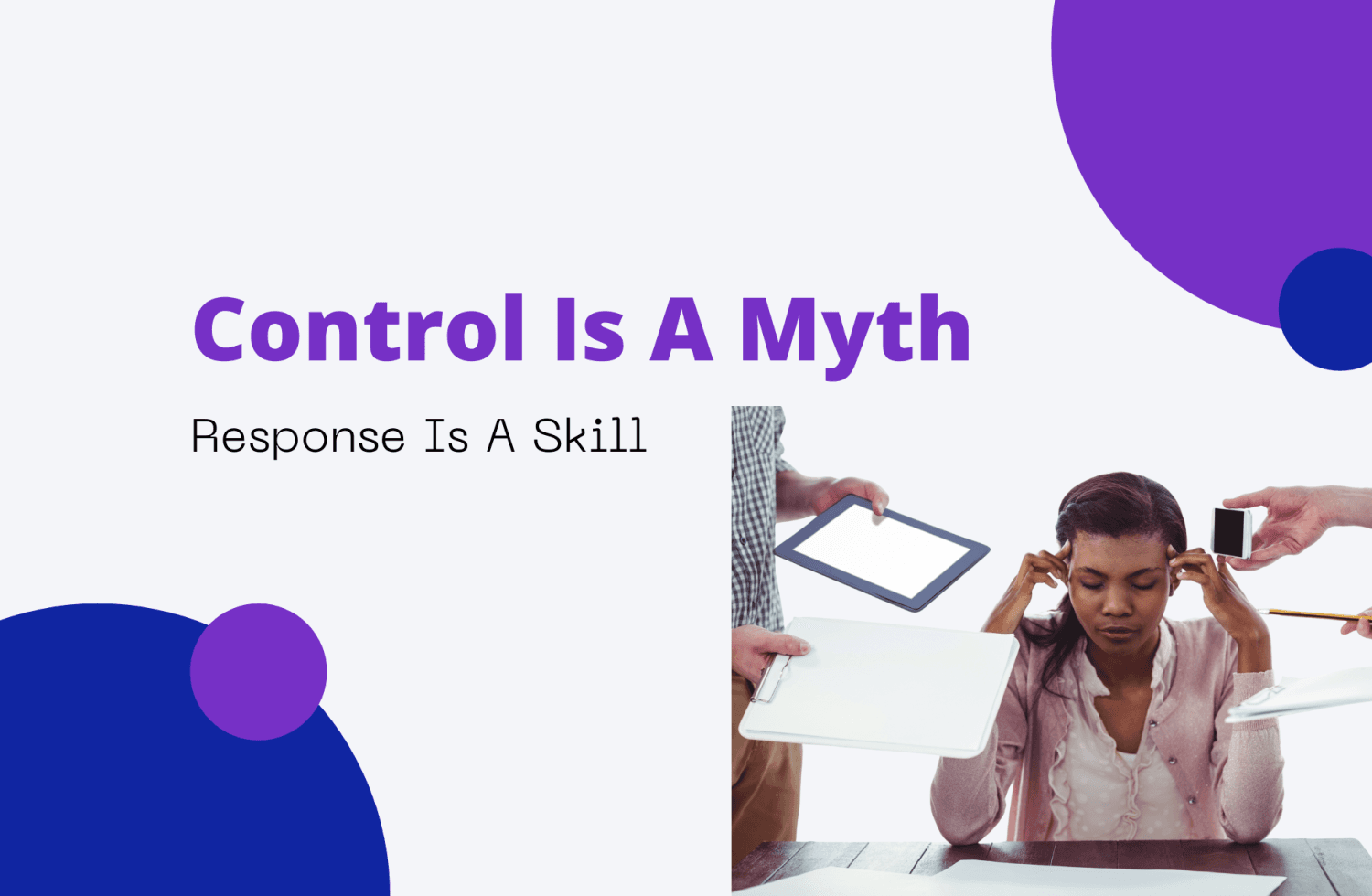Click Here to Download The PDF.
How to Handle Disrespect Without Losing Your Peace, Your Standards, or Yourself
Disrespect doesn't always announce itself.
Sometimes it whispers in sarcasm.
Sometimes it hides behind a smile.
Sometimes it comes out sharp, loud, and public.
Other times, it's what was left unsaid.
But no matter how it shows up, here's the truth:
Disrespect isn't really about what was said.
It's about what happens next.
And that's where your power lives.
You can't control someone's tone.
You can't force them to be kind, patient, or self-aware.
But you can decide how you show up in that moment—and that choice can change everything.
This article is about that moment.
The moment you decide to respond instead of react.
The moment you protect your peace without lowering your standards.
The moment you stay rooted in who you are—even when someone else isn't.
Let’s go deeper than surface-level advice.
Let's build real tools you can actually use, and look at how this works in real workplaces, with real people, and real tension.
When Reacting Feels Strong, But Isn't
In the heat of disrespect, everything speeds up.
You feel it in your chest.
In your voice. In your hands.
And the first instinct is usually to do something fast.
Snap back. Call it out. Or leave the room completely.
That instinct makes sense.
It gives the illusion of control. It protects your pride.
But real strength isn’t found in speed. It’s found in stillness.
Responding with calm isn’t weakness—it’s restraint.
And that kind of restraint? It doesn’t come from fear.
It comes from clarity.
Clarity about who you are.
Clarity about what matters.
Clarity about what you’re not willing to carry.
And that brings us to a model that helps you move with that kind of clarity, even under pressure.
The Respect Response Model: Stay Calm, Stay in Control
Moments of disrespect test you.
Not because of how loud they are, but because of how tempting it is to match that volume.
The Respect Response Model isn’t just theory.
It’s a way to protect your energy without letting things slide.
A way to keep your standards high without raising your voice.
A way to lead yourself—and others—even when emotions are high.
Here’s how it works:
Defuse the Situation
Before you say a word, pause.
Take a full breath.
Let the silence hang for a second longer than usual.
That moment? That’s where your control lives.
When you defuse first, you stop yourself from stepping into the emotional fire.
You’re not backing down.
You’re stepping back just far enough to decide what happens next.
Acknowledge Their Words (Without Agreeing)
Say, "I hear you."
Not because they’re right.
Not because they deserve a pass.
But because those three words let you lead the energy without adding fuel to it.
Acknowledging isn't the same as agreeing.
It's a calm interruption to the cycle of attack and defend.
Set Clear Boundaries
This is the moment to be direct.
"I don’t accept that tone."
"I’m happy to continue this, but not like that."
"I’d prefer a conversation, not a confrontation."
Boundaries aren't about control.
They're about clarity.
You're not punishing. You're defining. You're saying,
"Here's where I stand. If you want to keep going, here's the line."
Shift the Focus
Sometimes the best move is to shift gears.
You don’t ignore what happened.
But you do decide not to spiral with it.
That might look like changing the subject, stepping away, or redirecting the group back to the real goal.
It’s not about avoidance. It’s about momentum.
You’re moving things forward instead of letting the moment define the rest of the day.
Six Practical Ways to Stay Grounded When It Gets Personal
Staying composed isn’t about burying your feelings.
It’s about using them in a way that serves you.
Here’s how to do that when things feel tense, pointed, or personal:
1. Mindful Pausing
Give yourself a moment to pause. Even just four seconds.
Breathe.
Feel your feet on the ground.
Feel the chair under you.
Come back to your body.
That tiny pause lets your thinking brain catch up to your emotional brain.
Those few seconds may be the difference between reacting and responding.
2. Reframe Their Intent
Ask yourself: Was that personal, or just poorly expressed?
Not every sharp comment comes from malice.
Some come from stress, insecurity, or a total lack of awareness.
Reframing gives you options.
It turns the heat down, so you can speak with more clarity.
You don’t have to excuse it.
But you don’t have to absorb it either.
3. Assertive Communication
Use "I" statements. Stay firm, not forceful.
Instead of: "You're being rude."
Try: "I felt dismissed when I was interrupted."
Instead of: "You always talk over people."
Try: "I want to finish my thought before we move on."
This keeps the conversation about your experience, not their character.
4. Clarify Expectations
Sometimes disrespect happens because expectations were never made clear.
Say it out loud:
- "In our meetings, let’s let each person finish before we respond."
- "Let’s stick to feedback about the work, not the person."
Don’t assume people know your standards.
Say them once, clearly. It often stops patterns before they repeat.
5. Choose Your Response
Not every comment deserves your time.
Ask:
- "Is this worth the energy?"
- "Will engaging lead to anything different?"
- "Am I responding to be heard or just to be right?"
Letting something go isn’t weakness.
It’s wisdom.
The key is that you get to choose.
6. Release and Refocus
Once it’s over, don’t carry it all day.
Let go of the story looping in your head.
Let go of the tension you held in your shoulders.
Come back to what matters.
You don’t win by carrying the moment.
You win by not letting it own your headspace.
A Real Workplace Story: Interruptions Were Killing the Team’s Momentum
I was brought in to consult with a growing creative team.
One of their project leads had a habit of taking over meetings.
They interrupted people often, cut off half-finished ideas, and redirected conversations toward their own agenda.
At first, people tried to speak louder.
Then they stopped speaking altogether.
The team grew quiet.
Meetings got shorter.
And slowly, morale dropped.
Team members didn’t feel safe sharing.
People told me in private they felt "shut down" and "dismissed."
One even said, "I start second-guessing my ideas because I know they’ll get interrupted anyway."
No one wanted to call it out in front of the group.
But letting it go wasn’t working.
And the tension was turning into resentment.
I introduced the Respect Response Model and trained the team on how to use it.
We practiced:
- Pausing before reacting
- Saying, "I hear you, but I’d like to finish my thought"
- Setting clear language around interruptions: "Let’s let people finish before we respond"
- Redirecting meetings: "Let’s hear the rest of their idea before we move on"
The shift was subtle but powerful.
In one meeting, a team member finally used what we practiced.
When they were cut off, they said calmly:
"Can I finish the idea first? I think it’ll help us all get aligned."
The room got quiet.
The lead nodded.
The idea was shared fully.
That one sentence changed the dynamic of future meetings.
The lead didn’t change overnight.
But the team did.
They found their voice again—not by yelling, but by staying calm and clear.
Tools Worth Keeping: Resources to Help You Respond, Not React
Here are a few of the best-rated and most helpful tools on this topic:
Book: Nonviolent Communication by Dr. Marshall Rosenberg
Learn how to express yourself honestly without judgment, and listen in a way that helps you stay connected—even in conflict.
Book: Difficult Conversations by Douglas Stone, Bruce Patton, and Sheila Heen
A classic for a reason. This book gives real-world strategies for talking through uncomfortable situations without losing your voice or the relationship.
TED Talk: How to Deal with Difficult People by Jay Johnson
Clear and direct advice on managing people who push your buttons—without becoming reactive yourself.
Podcast Episode: The Daily Stoic – Respond, Don’t React
A daily reminder that your reaction is your responsibility. Great short listens when you need to reset.
TV Moment: Ted Lasso, Season 1, Episode 5
Ted gets disrespected publicly—but instead of retaliating, he responds with self-awareness and calm. A masterclass in staying clear-headed under pressure.
What You Keep Is What Matters Most
The Moment Ends. What Stays With You?
You can be disrespected without being defined by it.
It might sting. It might echo in your head.
It might make you question whether staying calm was the right move.
But here’s what matters: You didn’t match their behavior.
You didn’t hand over your peace.
You didn’t lower your standards to meet their tone.
That’s not weakness.
That’s discipline.
That’s leadership.
That’s knowing exactly who you are, especially when someone else forgets who they are.
Sometimes you speak up.
Sometimes you walk away.
Sometimes you reset the conversation and move on.
But every time, the power is yours.
Because anyone can react.
Few know how to respond.
And when you respond with clarity and calm, you don’t just handle disrespect.
You rise above it—and you walk away carrying only what you choose to keep.
Download the Respect Response Model Infographic
Want to keep this framework on hand?
Download the full Respect Response Model infographic as a printable PDF.
You can save it, share it, or use it with your team when things get tense.
It’s a reminder that staying calm and clear is always an option—even when it doesn’t feel like it.




